
Name: Christos N. Markides, Clean Energy Processes (CEP) Laboratory, Department of Chemical Engineering, Imperial College London, U.K.
Presentation Title: Solar combined heating, cooling and power systems based on hybrid PV-thermal technology
Abstract: By 2050, solar technologies are projected to deliver the majority of the world’s electricity. Although solar energy can be used to provide both heat and electrical power, most solar panels are designed for only one of these purposes. In particular, photovoltaic (PV) panels are typically less than 20% efficient in delivering electricity from the sun’s incident energy. At the same time, it is well known that PV cells experience a deterioration in performance (efficiency) when they are operated at higher temperatures, and that this leads to high losses especially when the solar resource is at its highest. For example, a drop in PV cell efficiency of up to 20% can be expected when the PV cells reach operating temperatures of ~60-70 °C, which is easily experienced in hot climates.
This performance loss has motivated the development of so-called ‘hybrid’ PV-thermal (PV-T) solar collector technology, which combines PV modules with a contacting fluid (gas or liquid) flow in various different geometries and configurations. Here, the fluid is used to cool the PV cells and, therefore, to increase their electrical efficiency, while delivering a potentially useful thermal output (hot fluid stream) from the collector, which offers some advantages when space is at a premium and there is demand for both heat and power. PV-T collectors have been shown to be a highly efficient technology, capable of achieving system efficiencies (electrical plus thermal) in excess of 70%.
By far the most common use of the thermal-energy output from PV-T systems (in fact most solar-thermal collector technologies) is to provide hot water at 50-60 °C for households or commercial use. However, a wide range of opportunities arise at higher temperatures when additional power-generation cycles (e.g., with organic Rankine cycles, thermoelectric generators, amongst other) or thermally-driven cooling technologies (e.g., with desiccant, ad/absorption refrigeration cycles, amongst other) can be integrated with solar (including PV-T) collectors into wider multi/polygeneration systems. These additional options become viable at temperatures typically above ~80 °C, and importantly, become increasingly efficient at progressively higher temperatures. In standard PV-T collector designs, however, the electrical and thermal outputs are traded-off each other, since any effort to collect additional thermal energy or to increase the temperature of that energy leads to an electrical loss. This has led recently to the proposal of collector designs that can deliver useful heat at a high temperature while not sacrificing the electricity output. In this talk we will present conventional and such advanced PV-T collector designs, their underpinning principles, discuss the challenges and opportunities of further developing this technology, and of integrating it within wider solar-energy systems capable of the affordable provision of cooling, heating and power.
Bio: Christos Markides is Professor of Clean Energy Technologies, Head of the Clean Energy Processes (CEP) Laboratory and leads the Experimental Multiphase Flow (EMF) Laboratory, which is the largest experimental space of its kind at Imperial College London. He specialises in applied thermodynamics, fluid flow and heat/mass transfer processes as applied to high-performance devices, technologies and systems for thermal-energy recovery, utilization, conversion, or storage. His research interests include heating, cooling and power, and in particular, solar energy and waste heat in heat-intensive industrial applications. He is Editor-in-Chief of Elsevier journal ‘Applied Thermal Engineering’, Member of the Scientific Panel of the ASME ORC Power Systems Committee, the Scientific Panel of the Knowledge Centre – Organic Rankine Cycle (KCORC), the Scientific Committee of the UK Energy Storage SUPERGEN Hub, and the UK National Heat Transfer Committee.
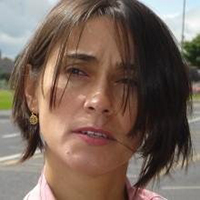
Track 7: Engineering Education
Name: Anabela Alves, University of Minho University of Minho
Presentation Title: Role of Lean Education in Preparing Future Workforce: Closing the Academic and Professional Gap
Abstract: Academic and professional worlds are kept apart from working together by an invisible barrier. Nevertheless, the academia is preparing the future professionals and to achieve this preparation, a tuning between professional needs and academic teaching is critical. Though the academia has an important role in forecasting the future needs, the professionals, many times, are in better conditions to forecast due to their proximity to the market and its needs. So a joint work must be done between these two worlds. Lean Education derives from a methodology that emerged in the industry, and nowadays is spread to all industries and services, including the education services, not only as a way to improve these services but more importantly, as a pedagogical platform to innovate the learners’ curricula and better prepare them for the professional world. Lean education allows development of competencies such as systems thinking, critical analysis, sustainability and ethical issues, assessment challenges of the overall performance of a system as opposed to the detailed functions of a component, as well as establishing criteria for, and transparency of decision making. This plenary addresses the above deficiencies from a holistic perspective, accounting for issues in communications, teamwork across discipline and geographic borders, and project/design status visualization. Lean Education’s role as a holistic perspective and as a curricular innovation capable of developing the competencies missing in the current engineering curricula that bridge the gap between the academic and professional worlds. The talk covers sustainability and systems concepts of Lean Education, identification of strategies and weaknesses in current curricula, competencies and skills needed to an organizational health and Lean Education’s capability in providing content and competency mastery pulled by stakeholders (society, employers, faculty, students).
Bio: Anabela C. Alves, an expert in lean education, is a faculty in the Department of Production and Systems/School of Engineering/University of Minho. She holds a PhD in Production and Systems Engineering, being affiliated to Centre ALGORITMI. Her main research interests are in the areas of Production Systems Design and Operation; Lean Production (Lean Education, Lean Healthcare, Lean Services, Lean Product Development, Lean & TRIZ, Lean-Green and Lean & Ergonomics); Production Planning and Control, Project Management and Engineering Education, with particular interest in active learning methodologies, e.g. Project-Led Education (PLE) and Project/Problem-Based Learning (PBL). She is author/coauthor of more than 100 publications in conferences publications or communications, 4 books, 4 editions of conference proceedings, 17 book chapters and 27 international journal articles. She participated in 26 events abroad and 27 in Portugal. She directed several graduate theses during her teaching career. She is member of the Scientific and Organizing Committee of the International Symposium on Project Approaches in Engineering Education (PAEE). She is member of the following societies and networks: SOCOLNET - Society of Collaborative Networks; Portuguese Society of Engineering Education (SPEE); Portuguese Institute of Industrial Engineering (IPEI); American Society of Mechanical Engineers (ASME); Lean Education Academic Network (LEAN), European Professors of Industrial Engineering and Management (EPIEM) and IEM Care Foundation. She participated in three partnerships R&D projects with Bosch Car Multimedia. Her publications could be consulted at: ORCID.
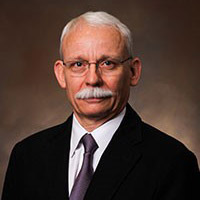
Track 8: Fluids Engineering
Name: Philip Smith, Institute for Clean and Secure Energy, Institute for Clean and Secure Energy Presentation
Title: Using Uncertainty Quantification with HPC to Reconcile Models and Measurements
Abstract: Bayesian methods for uncertainty quantification (UQ) provide the opportunity to identify model form uncertainty in both measurements and models. Under sponsorship of the US DOE NNSA we have used HPC (10 - 250 thousand cores) with scalable large eddy simulations (LES) for utility scale (100 - 1000 MW) particle-laden pulverized coal and biomass power boilers. We have found that these UQ-methods have allowed us to use data from models and measurements to extrapolate from laboratory scale experiments to full-scale predictions. The resulting Bayesian posterior predictive includes the effect of uncertainty from model parameters, scenario parameters, and model form uncertainty in both the instrument models and the predictive physics-based LES models.
Bio:
Present:
- Director, Institute for Clean and Secure Energy (ICSE), The University of Utah
- Professor, Department of Chemical Engineering, The University of Utah
- Director, Carbon Capture Multidisciplinary Simulation Center (CCMSC), a U.S. Dept. of Energy NNSA Predictive Science Academic Alliance Program Center
- Chair, American Flame Research Committee (AFRC), a national committee of the International Flame Research Foundation, Liverno, Italy
- President, CRSim Inc., a Utah Company
Past:
- 2000-2007: department chair, Chemical Engineering, The University of Utah
- 1990-1997: cofounder and vice-president, Reaction Engineering International
- 1984-1990: head, Combustion Computations Laboratory, Advanced Combustion Engineering Research Center (ACERC), an NSF - ERC, Brigham Young University
- 1982-1983, staff member, Los Alamos National Laboratory, Energy (Q) Division
- 1979-1990: Asst. & Assoc. Professor, Brigham Young University
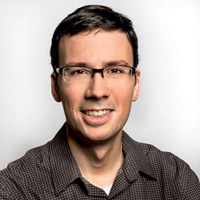
Track 8: Fluids Engineering
Name: David Sinton, University of Toronto
Presentation Title: The smallest fluids technologies for the largest fluids challenge: Microfluidics for energy and the environment
Abstract: Energy and the environment constitute the world’s most large-scale fluids challenges. The world's smallest fluids technologies have an important role to play in assessing and informing energy technologies as well as predicting environmental impacts. In this talk I will outline our group's efforts in developing microfluidics and nanofluidics for energy and environmental applications in three areas: (i) analyzing fluids to improve the efficiency of current, large scale energy operations; (ii) converting CO2 into valuable chemical feedstocks via electrocatalytic flow cells powered by renewable electricity; and (iii) assessing the environmental impact of elevated CO2, microplastics, and other local stressors on organisms and model ecosystems. I will close by suggesting additional emerging opportunities for the fluids community to contribute to energy and environmental challenges, particularly through the deep integration of microfluidics, robotics and machine learning.
Bio: David Sinton is a Professor in the Department of Mechanical & Industrial Engineering at the University of Toronto, and the Canada Research Chair in Microfluidics and Energy. He was the Associate Chair of Research in Mechanical & Industrial Engineering, as well as the Interim Vice-Dean of Research in the Faculty of Applied Science & Engineering. Prior to joining the University of Toronto, Dr. Sinton was an Associate Professor and Canada Research Chair at the University of Victoria, and a Visiting Associate Professor at Cornell University. The Sinton Lab is application-driven and develops fluid systems for energy and the environment. The group developed a library of industrial fluid testing systems to improve chemical performance in the energy industry, now commercialized through the startup Interface Fluidics. The group is currently developing fluid systems to produce renewable fuels from CO2, to develop energy efficient industrial working fluids, and to quantify the environmental impacts of future climate conditions. Dr. Sinton was an NSERC E.W.R. Steacie Memorial Fellow, and is a FASME and FAAAS. He serves on the advisory board of the journal Lab on a Chip.
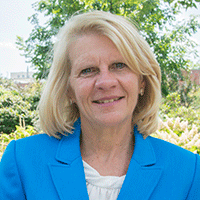
Track 9: Heat Transfer and Thermal Engineering
Name: Karen Thole, Pennsylvania State University
Presentation Title: Using Additive Manufacturing to Advance Designs in Convective Cooling
Abstract: Recent technological advances in the field of additive manufacturing (AM) have widened the design space for complex convective cooling designs. Using additive manufacturing allows for increasingly small and complex geometries to be fabricated with little increase in time or cost. The opportunity for heat transfer engineers is to exploit the use of additive manufacturing in re-thinking how to optimize cooling schemes for components, or generate novel heat transfer surfaces. Interesting roughness features result when using additive manufacturing, which are a strong function of the build parameters. The inherent roughness using additive manufacturing can, in fact, be used to improve convective heat transfer beyond that of highly engineered surfaces. New design tools can generate components with enhanced performance, although further improvements in accounting for roughness are needed.
Bio: Dr. Karen A. Thole is a Distinguished Professor of Mechanical Engineering and Head of the Department of Mechanical Engineering at The Pennsylvania State University. Dr. Thole’s expertise is heat transfer and cooling of gas turbine airfoils through detailed experimental and computational studies. At Penn State, Dr. Thole founded the Steady Thermal Aero Research Turbine Laboratory (START) lab, which houses a unique test turbine facility and is a center of excellence in heat transfer for a major gas turbine manufacturer. Dr. Thole has published over 230 archival journal and conference papers supervised over 65 dissertations and theses. She currently serves as a Governor on ASME’s Board of Governors and is a member of NASA's National Aeronautics Committee. She has been recognized by the U.S. White House as a Champion of Change for STEM, the Rosemary Schraer Mentoring Award, and the Howard B. Palmer Faculty Mentoring Award. Dr. Thole also received the 2014 Society of Women Engineer’s Distinguished Engineering Educator Award, the 2015 ASME George Westinghouse Gold Medal, the 2016 Edwin F. Church Medal and the 2019 AIAA Air Breathing Propulsion Award. She holds two degrees in Mechanical Engineering from the University of Illinois and a PhD from the University of Texas at Austin.
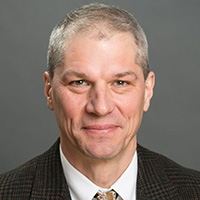 Track 9: Heat Transfer and Thermal Engineering
Track 9: Heat Transfer and Thermal Engineering
Name: John Bischof, University of Minnesota
Presentation Title: Nanowarming for Regenerative Medicine
Abstract: This talk will explore the underlying physics and advantages of nanoparticle-based rewarming technologies for regenerative medicine. Gold and iron oxide nanoparticles have unique and tunable properties that allow transduction of optical or radiofrequency (RF) electromagnetic fields to affect heating of biomaterials at multiple scales (1 µL droplets to L containers). Indeed, both nanoparticle types have a long history of use for controlled heating in the treatment of cancer. This talk will explore the use of nanoparticle heating for a new application entitled “nanowarming,” which allows both rapid and uniform rewarming of vitrified (i.e. cryopreserved) biomaterials back from the cryogenic state, thereby avoiding crystallization and cracking failures. This warming, which can range from 100s °C/min with iron oxide RF heating to 10,000,000 °C/min with laser gold warming, addresses a rewarming technology bottleneck for vitrified large (i.e. tissues and organs) and small systems (i.e. embryos and oocytes). New capabilities in cell, tissue, and rodent organ cryopreservation, including the first zebrafish embryo cryopreservation yielding live and reproducing fish, will be presented. In summary, this talk demonstrates the growing opportunities for nanoparticle heating in regenerative medicine.
Bio: Bischof works in the area of thermal bioengineering with a focus on biopreservation, thermal therapy, and nanomedicine. His awards include the ASME Van Mow Medal and Fellowships in societies including Cryobiology, JSPS, ASME and AIMBE. He has served as the President of the Society for Cryobiology and Chair of the Bioengineering Division of the ASME. Bischof obtained a B.S. in Bioengineering from U.C. Berkeley (UCB) in 1987, an M.S. from UCB and U.C. San Francisco in 1989, and a Ph.D. in Mechanical Engineering from UCB in 1992. After a Post-doctoral Fellowship at Harvard in the Center for Engineering in Medicine, he joined the faculty of the University of Minnesota in 1993. Bischof is now a Distinguished McKnight University Professor and Kuhrmeyer Chair in the Departments of Mechanical and Biomedical Engineering, and the Medtronic-Bakken Endowed Chair and Director of the Institute for Engineering in Medicine at the University of Minnesota.
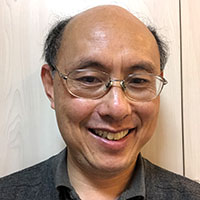
Track 10: Advanced Materials: Design, Processing, Characterization and Applications
Name: Zhigang Suo, Harvard University
Presentation Title: Integrated Soft Materials
Abstract: An integrated circuit achieves its function by integrating dissimilar components, and so does a living organ. Soft materials—tissues, elastomers, hydrogels, and ionogels—are under intense development for immediate and far-reaching applications. Examples include tissue regeneration, synthetic biology, drug delivery, soft robots, ionotronics, bioelectronics, skin-attached and implanted devices, active textiles, as well as wearable and washable devices. Nearly all applications require the integration of dissimilar soft materials. This talk describes several recent examples of integrated soft materials that achieve unusual functions. Also highlighted are fundamental challenges to the mechanics and chemistry of materials, such as adhesion, fatigue, and seal. Integrated soft materials open opportunities to reinvent our disciplines and ourselves. Bio: Zhigang Suo is Allen E. and Marilyn M. Puckett Professor of Mechanics and Materials at Harvard University. He earned a bachelor’s degree from Xi'an Jiaotong University in 1985, and a Ph.D. degree from Harvard University in 1989. Suo joined the faculty of the University of California at Santa Barbara in 1989, Princeton University in 1997, and Harvard University in 2003. His research centers on the mechanics of materials. Applications include electronics, composites, and stretchable devices. He served on the executive committee of the ASME Applied Mechanics Division.
Bio: Zhigang Suo is Allen E. and Marilyn M. Puckett Professor of Mechanics and Materials at Harvard University. He earned a bachelor’s degree from Xi'an Jiaotong University in 1985, and a Ph.D. degree from Harvard University in 1989. Suo joined the faculty of the University of California at Santa Barbara in 1989, Princeton University in 1997, and Harvard University in 2003. His research centers on the mechanics of materials. Applications include electronics, composites, and stretchable devices. He served on the executive committee of the ASME Applied Mechanics Division.

Track 10: Advanced Materials: Design, Processing, Characterization and Applications
Name: Irene Beyerlein, UC Santa Barbara
Presentation Title: Material and microstructural features that prompt sub-crystalline localization in polycrystalline high-performance alloys
Abstract: Improved prediction of the behavior of materials under the complex loading conditions encountered in structural components is critical to ensure reliable, long-term performance and to guide the design of new materials along high controlled processing paths. However, a major challenge for structural materials is the strong dependence of the intrinsic plastic deformation processes on material structure, with important features at the nanoscale, microscale and mm-scale in most classes of metallic materials. Deformation processes are typically highly heterogeneous, propagating through complex microstructure-dominated networks, ultimately resulting in local damage and failure of the part. Cyclic and monotonic loading are performed on a number of high-performance alloys, such as high strength titanium aerospace alloy and Ni-based superalloys. Using a combination of in-situ deformation DIC and synchrotron measurements, 3D microstructural characterization, and 3D crystal plasticity based computational modeling, we investigate the micromechanical and microstructural factors leading to strain localization and subsequent slip band initiation. This suite of techniques altogether enables full-field measurement and modeling of the plastic and elastic field at the surface and in the bulk of the specimen. The analysis focuses on the coupled role of elastic anisotropy, grain neighborhoods, and grain shape and size in determining the location of the exceptionally preferred points of high elastic strain concentration and localized slip, when the applied strain is under but near the macroscopic elastic-plastic transition. We find that the very few localized slip bands are correlated with the development of only the highest elastic strain concentrations. Strain localization is specifically favored in crystals that have an outstandingly compliant orientation relative to all its neighbors and a non-equiaxed shape with sharp corners. These results explain that the presence of annealing twins in the microstructure significantly increases the probability of localization.
Bio: Irene J. Beyerlein is a professor at the University of California at Santa Barbara with a joint appointment in the Mechanical Engineering and Materials Departments. After receiving her Ph.D. degree in Theoretical and Applied Mechanics at Cornell University in 1997, she began a postdoctoral appointment as a J.R. Oppenheimer Fellow at Los Alamos National Laboratory, where she remained on the scientific staff in the Theoretical Division, until 2016. She has published one book, nine book chapters, and more than 290 peer-reviewed articles in the field of structural composites, materials processing, multiscale modeling of microstructure/property relationships, deformation mechanisms, and polycrystalline plasticity. She is an editor for Acta Materialia and Scripta Materialia and an associate editor for Modelling and Simulation in Materials Science and Engineering. In recent years, she has been awarded the Los Alamos National Laboratory Fellow’s Prize for Research (2012), the International Plasticity Young Researcher Award (2013), the TMS Distinguished Scientist/Engineering Award (2018), and the Brimacombe Metal (2019).

Track 11: Mechanics of Solids, Structures and Fluids
Name: Kaushik Bhattacharya, California Institute of Technology
Presentation Title: Getting Stuck and Breaking Free: Adhesion, Friction, Strength and Toughness
Abstract: Many phenomena of scientific and technological interest are described by the evolution of free boundaries or free discontinuities. Examples include the peel front while peeling an adhesive tape, the rupture front of earthquakes, dislocations in solids and the crack set during fracture. This evolution takes place in a heterogeneous medium where the length-scale of the heterogeneities are much smaller than the length scale of interest. In such situations, it is natural to seek the overall or effective behavior at the scale of interest. This effective behavior is not characterized by averaging, but instead dominated by critical events. Thus, the effective behavior can be qualitatively different from the local behavior. This makes such problems difficult to study, but also offers opportunities for exploiting heterogeneities to dramatically material properties. This talk will discuss the underlying issues with examples drawn from fracture, friction, dislocation dynamics, phase boundary propagation and peeling of adhesive tape.
Bio: Kaushik Bhattacharya is Howell N. Tyson, Sr., Professor of Mechanics and Professor of Materials Science as well He received his B.Tech degree from the Indian Institute of Technology, Madras, India in 1986, his Ph.D from the University of Minnesota in 1991 and his post-doctoral training at the Courant Institute for Mathematical Sciences during 1991-1993. He joined Caltech in 1993. He has held visiting positions at Cornell University (1988), Heriot-Watt University in Scotland 1992), Max-Planck-Institute at Leipzig (1997-98), Isaac Newton Institute at the University of Cambridge (1999), Indian Institute of Science at Bangalore (2001) and the Jet Propulsion Laboratory (2006) and the University of Cambridge (2008-09). He has received the Distinguished Alumni Award of the Indian Institute of Technology, Madras, the Outstanding Achievement Award of the University of Minnesota (2018), the Warner T. Koiter Medal of the American Society of Mechanical Engineering (2015), Graduate Student Council Teaching and Mentoring Award at Caltech (2013), Young Investigator Prize from the Society of Engineering Science (2004), the Special Achievements Award in Applied Mechanics from the American Society of Mechanical Engineers (2004) and the National Science Foundation Young Investigator Award (1994). He was Editor of the Journal of the Mechanics and Physics of Solids (2004-2015) and currently serves on the Editorial Board of a number of journals.
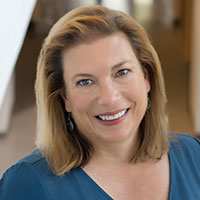
Track 11: Mechanics of Solids, Structures and Fluids
Name: Ellen Arruda, University of Michigan
Presentation Title: Full-Field Methods for Characterizing the Non-Linear Anisotropic Response of the Anterior Cruciate Ligament of the Knee
Abstract: The Anterior cruciate ligament, or ACL, of the knee is a soft tissue structure comprised of two main bundles of hierarchical collagenous structures. As with all soft tissue, the ACL is extremely difficult to mechanically test, and determining its non-linear, anisotropic mechanical response has remained elusive. Yet, obtaining the mechanical properties of the ACL is exceedingly clinically relevant to the design of better replacement grafts for torn ACLs or to prevent ACL tears in the first place. This talk will focus on our recent efforts to characterize the ACL response utilizing full-field displacement measurement techniques that offer more accurate, repeatable, and comprehensive experimental data than traditional testing methods. We've pioneered full-volume characterization techniques that provide much needed insight into the inaccuracies associated with many current experimental protocols and also the shortcomings of some popular constitutive models in capturing the full 3D response of the ACL. I will describe how we use these data to develop an ACL constitutive model for implementation into computational models of the knee during regular gait and under impact loading simulations. Accurate computational models of the knee such as ours may one day be used to guide clinical practice to intervene to prevent an ACL injury or to determine the best course of action to repair an injury.
Bio: Professor Ellen M Arruda is the Tim Manganello/BorgWarner Department Chair of Mechanical Engineering, and the Maria Comninou Collegiate Professor of Mechanical Engineering at the University of Michigan. She also holds courtesy appointments in Biomedical Engineering and in Macromolecular Science and Engineering. Professor Arruda earned her BS degree in Engineering Science (with Honors) and her MS degree in Engineering Mechanics from Penn State, and her PhD degree in Mechanical Engineering from MIT.
Professor Arruda teaches and conducts research in the areas of theoretical and experimental mechanics of macromolecular materials, including polymers, elastomers, composites, soft tissues and proteins, and in tissue engineering of soft tissues and tissue interfaces. Her recent honors and awards include the 2019 Nadai medal from the American Society of Mechanical Engineers, the 2018 Rice medal from the Society of Engineering Science, the 2015 Outstanding Engineering Alumnus Award from the Pennsylvania State University, the 2014 Distinguished Faculty Achievement Award from the University of Michigan, the Ann Arbor Spark Best of Boot Camp award 2012, and the 2012 Excellence in Research Award by the American Orthopaedic Society for Sports Medicine.
Professor Arruda has more than 100 papers in scientific journals. She also holds eleven patents. Her H-index is 32 (ISI). Professor Arruda is a Fellow of the American Society of Mechanical Engineers, the American Academy of Mechanics, and the Society of Engineering Science. She is a member of the National Academy of Engineering (class of 2017). She is currently President of the American Academy of Mechanics.
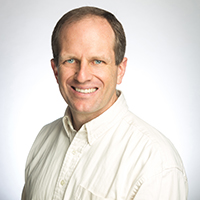
Track 12: Micro-and Nano-Systems Engineering and Packaging
Name: Bruce K. Gale, University of Utah
Presentation Title: Taking Microfluidics from Research Ideas to a Real Product
Abstract: Microfluidics have promised to revolutionize medicine and biology for decades now, but the promise has been slow to be realized. Many applications of microfluidics are now having an impact. This presentation will focus on a few technologies and how they have transitioned (or begun to transition) from the research lab to commercialization. The talk with show how simple microfluidic platforms can be used to solve complex problems biological problems with an emphasis on mechanical engineering approaches. The presentation will explore a few of our recently developed technologies in particular: human sperm trapping and sorting for fertility treatment using inertial microfluidics with non-Newtonian fluids, pathogen detection from food using complex microfluidic devices¸ and fast polymerase chain reaction (PCR) chips for rapid personal and medical analysis that take advantage of microfluidic scaling laws. A few of our recent medical device projects will also be highlighted, including a vascular coupling device and a nerve regeneration device.
Bio: Bruce K. Gale, received his undergraduate degree in Mechanical Engineering from Brigham Young University in 1995 and his PhD in Bioengineering from the University of Utah in 2000. He was an assistant professor of Biomedical Engineering at Louisiana Tech University before returning to the University of Utah in 2001 where he is now Chair and a professor of Mechanical Engineering. He is currently Director of the Utah State Center of Excellence for Biomedical Microfluidics, a center devoted to research and commercialization activities around microfluidic devices. His primary interests include solving medical, biology, and chemistry problems using a variety of microfluidic approaches to complet complex and challenging medical and biological assays. Specifically, he is working to develop a microfluidic toolbox and approaches for the rapid design, simulation, and fabrication of devices with medical and biological applications. The ultimate goal is to develop platforms for personalized medicine, which should allow medical treatments to be customized to the needs of individual patients. As an outgrowth of his work, 5 companies have been formed and he maintains a role at each. The first is Carterra, a multiplexed instrument development company focused on protein characterization in the pharmaceutical industry that was spun out of his lab in 2005. The others include: Espira, which focuses on pathogen detection and exosome separations; Nanonc, which focuses on reproductive medicine applications of microfluidics; wFluidx, which focuses on genotyping zebrafish embryos; and Microsurgical Innovations, which focuses on miniature medical devices.

Track 12: Micro-and Nano-Systems Engineering and Packaging
Name: Chang-Jin “CJ” Kim, University of California, Los Angeles
Presentation Title: Drag Reduction of Watercraft: Microfluidics Applied to Macroscale Objects
Abstract: When an object (e.g., boat) moves in a liquid (e.g., water), drag impedes its motion, consuming energy and limiting speed. Since maritime transportation alone accounts for a significant portion of the global oil consumption and greenhouse gas generation, a reduction of the water drag by even a small fraction would have a considerable benefit worldwide. Because the skin friction drag is the largest portion of the total drag experienced by most water vehicles, numerous mechanisms to reduce the skin friction have been explored for decades. However, none has been widely accepted because of poor energy efficiency. About a decade ago, superhydrophobic (SHPo) surfaces started to receive significant attention because the air layer between water and the surface can lubricate the water flows, decreasing the skin friction. Unlike other existing gas-lubricating methods, SHPo surfaces would hold a gas layer (called plastron) within the microscopic structures on the surface, making it possible to reduce skin friction without consuming energy to provide the gas. Despite two decades of research, however, drag reduction with SHPo surfaces has not been obtained for the most coveted application example, i.e., high Reynolds number flows in open water. This talk will present our recent achievement, i.e., the first successful large drag reductions (~30%, up to ~40%) with SHPo surfaces using credit-card-size samples tested under a boat on the sea at Reynolds number as high as 1.14x107 (friction Reynolds number as high as 5800). The results attest the importance of microscopic nuances of SHPo surfaces for a given application even if it is of macroscale, suggesting directions for other future goals as well.
Bio: Professor CJ Kim received his B.S. from Seoul National University, M.S. from Iowa State University, and Ph.D. from the University of California at Berkeley, all in mechanical engineering, and joined the faculty at UCLA in 1993. Holding the Distinguished Professor title and the Volgenau Endowed Chair in Engineering, he directs the Micro and Nano Manufacturing Lab to perform research in MEMS and Nanotechnology, including design and fabrication of micro/nano structures, actuators and systems, with a focus on the use of surface tension. The recipient of the Research Excellence Award (Iowa State Univ.), TRW Outstanding Young Teacher Award (UCLA), NSF CAREER Award, ALA Achievement Award, Samueli Outstanding Teacher Award (UCLA), and Ho-Am Prize in Engineering, Prof. Kim has served on numerous professional and governmental committees and panels in MEMS and nanotechnology, including General Chair of the 2014 IEEE International Conference on MEMS. An ASME Fellow, he is currently serving as Senior Editor of the IEEE Journal of MEMS and on the Editorial Advisory Board for IEEJ Transactions on Electrical and Electronic Engineering. He has also been active as a scientific advisor, consultant, and founder of start-up companies.
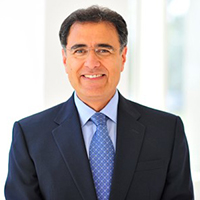
Track 13: Safety Engineering, Risk and Reliability Analysis
Name: Bilal Ayyub, University of Maryland, College Park, Maryland
Presentation Title: System Resilience: Definitions, Quantification and Associated Economics
Abstract: The concept of resilience is applicable to systems with anticipated performances and subject to disturbances. Understanding and quantifying resilience enable societies to use resources efficiently for enhancing or maintaining the performance of systems such as infrastructure. For example, natural disasters as disturbances resulted in worldwide direct damages of US$366 billion and 29,782 fatalities in 2011 alone. Storms and floods accounted for up to 70% of the 302 natural disasters worldwide, with earthquakes producing the greatest number of fatalities. Managing these risks and others rationally requires an appropriate definition of resilience and associated metrics. This presentation provides a resilience definition that meets a set of requirements with clear relationships to reliability and risk as key relevant metrics. Such metrics provide a sound basis for the development of effective decision- and policy-making methods for multihazard environments for various system types including lifeline, environmental, financial, etc. systems. The presentation also examines recovery, with its classifications based on level, spatial, and temporal considerations. The economics of resilience is briefly discussed.
Bio: Dr. Ayyub is a University of Maryland Professor of Civil and Environmental Engineering, Professor of Reliability Engineering, and Professor of Applied Mathematics and Scientific Computation. Dr. Ayyub’s main research interests are risk, resilience, uncertainty, decisions, and systems applied to civil, mechanical, infrastructure, energy, defence and maritime fields. Dr. Ayyub is a distinguished member of ASCE, and a fellow of the Structural Engineering Institute, the Society for Risk Analysis, ASME, and SNAME. Dr. Ayyub completed projects for governmental and private entities, such as the National Science Foundation, Department of Defence, Hartford, Chevron, Bechtel, etc. Dr. Ayyub is the recipient of several awards and research prizes from ASCE, ASNE, ASME, ENR, the Department of the Army, etc. He has authored and co-authored more than 650 publications including 8 textbooks and more than 15 edited books. He is also the founding Editor-in-Chief of the ASCE-ASME Journal of Risk and Uncertainty in Engineering Systems in. His most recent 2018 edited book on Climate-Resilient Infrastructure published by ASCE was selected as an Engineering-News Record Newsmaker in 2017.
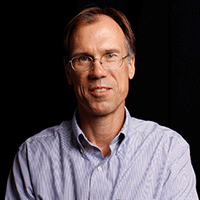
Track 14: Design, Systems and Complexity
Name: David Rosen, Singapore University of Technology & Design and Georgia Institute of Technology
Presentation Title: Design for Additive Manufacturing: Opportunities and Challenges
Abstract: Broadly speaking, the idea of design for additive manufacturing (DFAM) is to explore new design spaces to take advantage of the unique capabilities of AM processes. With tremendous design freedom available, resulting device designs can be complex geometrically, with complex material and property distributions, that perform multiple functions. At the same time, AM processes perform millions of operations to fabricate a part. Is it any wonder that parts exhibit more variability than in conventional manufacturing processes? In this talk, I explore the opportunities and challenges surrounding these issues of DFAM. Regarding opportunities, I highlight two directions. First, I present the idea of simultaneous design of a part, its material, and its manufacturing process since these are intimately linked in additive manufacturing. The fundamental need is to integrate materials information, specifically process-structure-property relationships, in order to determine if desired spatial distributions of properties are feasible given a material and a manufacturing process. Second, I highlight the need for methods of robust and reliability design to address process variabilities and enable part qualification. Regarding challenges, several topics are addressed, starting with the rapid changes in the AM industry. Additionally, a core attribute of AM processes is that both the part geometry and part material is fabricated simultaneously, in contrast to conventional manufacturing processes, which is the source of many challenges. The talk concludes with an overview of commercial software offerings to support DFAM, as well as standardization efforts that offer guidance to designers.
Bio: David Rosen is a Professor in the School of Mechanical Engineering at the Georgia Institute of Technology (on leave). Additionally, he is the Research Director of the Digital Manufacturing and Design Centre at the Singapore University of Technology & Design. He received his Ph.D. at the University of Massachusetts in 1992 in mechanical engineering. His research interests lie at the intersection of design, manufacturing, and computing with specific focus on additive manufacturing (AM), computer-aided design, and design methodology. He has industry experience, working as a software engineer at Computervision Corp. and a Visiting Research Scientist at Ford Research Laboratories. He is a Fellow of ASME and has served on the ASME Computers and Information in Engineering Division Executive Committee. He is the recipient of the 2013 Solid Freeform Fabrication Symposium, International Freeform and Additive Manufacturing Excellence (FAME) Award and the co-author of a leading textbook in the AM field.
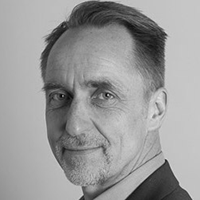
Track 18: Conference Wide Symposium
Name: Kai Goebel, System Sciences Lab at Palo Alto Research Center (PARC)
Presentation Title: Failure is not an ‘Option: Avoiding operational disruptions with mechanistic and data-driven damage prognostics- Sponsored by the NDPD Division’
Abstract: We are in an age where pervasive sensing, high communication bandwidth, and advances in AI have arrived at industrial equipment. The question is how one can leverage these advances for operational gain. To uphold operational functionality, these techniques flow into a Condition-Based Maintenance (CBM) strategy where maintenance is only performed on evidence of need identified through direct or indirect monitoring. Knowledge of an asset’s condition and how it will evolve is required such that the remedial action can be prescribed with sufficient lead time to minimize the cost and operational impact of the occurrence of a potential disruption. This strategy differs from “on-condition” maintenance in that an understanding of how much time is available before the asset loses functionality can be leveraged. The basic concept entails collecting and assessing data from NDE inspections and in-situ sensors to estimate remaining life of the system in question. This is done using either mechanistic, physics-based models or, as suitable, data-driven AI techniques. This talk lays out a roadmap of the tools and methods that are to be used to realize the promise of making failure not an option.
Bio: Dr. Kai Goebel is a Principal Scientist in the System Sciences Lab at Palo Alto Research Center (PARC). His interest is broadly in condition-based maintenance and systems health management for a broad spectrum of cyber-physical systems in the transportation, energy, aerospace, defense, and manufacturing sectors. Prior to joining PARC, Dr. Goebel worked at NASA Ames Research Center and General Electric Corporate Research & Development center. At NASA, he was a branch chief leading the Discovery and Systems Health tech area which included groups for machine learning, quantum computing, physics modeling, and diagnostics & prognostics. He founded and directed the Prognostics Center of Excellence which advanced our understanding of the fundamental aspects of prognostics. He holds 18 patents and has published more than 350 papers, including a book on Prognostics. Dr. Goebel was an adjunct professor at Rensselaer Polytechnic Institute and is now adjunct professor at Lulea Technical University. He is a member of ASME, co-founder of the Prognostics and Health Management Society, and associate editor of the International Journal of PHM.